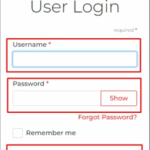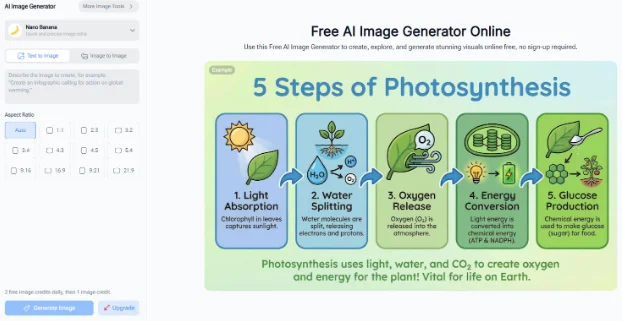The Ultimate 10-Step App Development Guide For Startup Success

The smartphone user base is growing, which in turn is driving the market for mobile applications.
When developing a mobile app, you need to be specific enough because your audience will use it to
interact with your products and services. Building a mobile application helps you find your target
audience and start your startup journey.
A web development company will hire the most talented app developers and put in all the effort to
guide the development process. These companies will share all the details of the development
process and their costs.
Startups usually face difficulties, but they can be overcome with the right strategy. In the article
below, you can read an explanation of what sorts of problems a startup app development can
encounter. A roadmap for app development is provided to accelerate this entire process.
Steps For App Development For Startups
You must follow the steps given below for the startup App Development. On the other hand, a
professional App Development company in the USA will assist you with the following steps to get a
planned application for users. Here are more details about the whole process:
Step 1 – Finding The Pain Point Of The Consumer
It may be wise for both startups and established companies to start with a good understanding of
the problem at hand and the user's needs when designing an app. If market research becomes
scarce, then the organization can use a mobile app development company to prevent hindrances in
serving the customers. Once they have identified their problems and difficulties, you can focus on
developing a solution for them.
What sets app development apart is the capacity to identify the actual needs of your users and
create a solution that meets those needs. The needs of the user change and evolve frequently.
Therefore, your startup app development will stand out if you can meet their needs and provide
them with everything they want.
Step 2 – Survey The Market
Another essential component is a thorough market analysis. It indicates that every element – the
vision, the efforts, and the expenses – is used effectively.
Do your research to determine whether or not your app idea will be very helpful to customers if you
are not interested in employing a startup app development business to complete this task.
Additionally, ensure the app meets the needs of a key market segment.
Step 3 – Verify By Developing An MVP
There are numerous benefits to creating a minimum viable product (MVP) for a startup. First of all,
all of the well-known mobile apps that are currently on the market had small beginnings. Before
becoming the industry titans they are today, these underwent dozens of changes and improvements
based on customer feedback.
The MVP, which addresses the primary issues of your target users and concentrates exclusively on
the necessary features, is the core of your project. It is the most basic and economical version of
your mobile application, which makes it one of the most significant app development milestones.
Step 4 – Completing The App's Concept
It's time to create a strategic application idea after you have the required market knowledge and
understanding of the needs of your audience. To finalize the concept, gather your team of designers,
developers, business analysts, and quality assurance specialists to talk about the different
components of your mobile application.
Step 5 – Wireframing Your Application
Our next important advice is to structure your mobile app once you know it is receiving positive
feedback from users and creating interest. A wireframe is a structural design for your application
that visually represents each component on the screen and how they could work. You cannot afford
to skip this step in the mobile app development process.
You'll comprehend your app's functioning and design better. It gives you a visual depiction of how
different components, like menus and buttons, will show up on every screen of your application and
how the user will interact with them. Any bugs that could cause issues later can be removed at this
point. It also helps to make any changes or modifications to the features according to the user.
Step 6 – Examining the wireframe
Now that your wireframe is complete, it's time to test it. Don't be fooled into believing it's just a
dummy or a backup product that doesn't require testing. Doing a little research now could help you
avoid issues later.
It is a creative step that can assist in assessing a mobile app's usability in the pre-development stage
and locating any gaps in functionality. In addition to identifying any shortcomings in functionality,
usability, and design, note any additional demands that might be fulfilled.
Step 7 – App Design
Making sure that many app designs are started from the beginning so that user feedback can be
gathered immediately is one of the finest methods to succeed in this vast field. People utilize the
app often as soon as they think the designs are good.
In an ideal world, app design would be essential to the growth and success of small businesses. The
software should work and have the greatest overall appearance. Therefore, extra attention should
be paid when developing an app to make it user-friendly. An app can achieve its maximum potential
with the help of an app code builder.
Step 8 – Setting Up a Monetization Plan
Establishing a strong monetization plan is a must for startups. You are not in the same position as
well-known firms which can afford to put customer engagement ahead of profit. So, when you are
talking to a group that bills itself as a startup web and mobile app development company, be clear
from the start that you want to make money off of your mobile application.
To do this, you must first decide which app monetization strategy is best for your mobile application.
You have several options to select from, including premium app models, in-app advertising, and
more, depending on your app's concept.
Step 9 – Promoting App
You can begin research with the marketing team for additional processing once you have nearly
finished the app effectively. Promoting the app through social media, email, and short message
service marketing, among other channels, is the first step in getting a wider audience. Lastly, focus
on the areas where the greatest outcomes can be readily attained in a short period.
Step 10 – Upkeep and timely updates
Maintaining your mobile application in line with market trends will require you to search for
methods to upgrade it continuously. Monitoring client satisfaction, app performance, user
engagement, and customer acquisition can help achieve this. With the help of these insights, you
might quickly identify and address growth barriers. Different kinds of continuous improvements will
improve the performance of the entire program.
The Bottom Line
For a startup, developing a mobile application is a strategic process that involves more than just
coding. Every stage is essential, from determining user pain points and conducting market research
to creating an MVP and making ongoing improvements. A well-designed software not only addresses
actual issues but also lays the groundwork for future expansion and success of the company.
For startups, Rainstream is the ideal partner because it combines technological know-how with
strategic direction. In addition to developing apps, we help you turn your idea into a functional,
scalable, and market-ready solution. Rainstream gives your startup the finest start possible!
FAQs
1- What defines a successful app?
The market, the consumer, and the product itself are all cleverly combined in a successful app. To
provide users with a distinctive value, excellent usability, and strong performance, all of these
elements must cooperate. The final but equally important component of a successful mobile app is
accessibility.
2- What aspects should companies take into account while selecting the best platform for their
mobile application?
Companies using the Android and iOS platforms need to carefully assess their target market,
revenue strategies, and audience. To make an informed choice, it is essential to evaluate consumer
preferences and how each platform fits with the company's objectives.
3- How is an application run?
The following are some essential procedures for managing the launch of a mobile app:
Track performance indicators like app stability and user engagement.
Update and patch bugs frequently to keep functionality consistent.
Set forward efficient marketing techniques to raise awareness and draw in new consumers.
To continuously develop the app and swiftly address feedback from customers.

Hy Vee Huddle: A Complete Informational Guide

The Connection Between Accounting Firms And Regulatory Compliance

Why Smart Startups Choose Custom AI Business Solutions Today

The Digital Lifeline: How Technology is Revolutionizing Addiction Recovery

From Clicks to Clients: Why Trust-First Local SEO Wins the Long Game

Forgot Your iPhone Password? Here’s How to Unlock It Easily

How Strikes and Step Through Bikes Are Using Tech for Better Range

NoteGPT AI Image Generator: Transforming Branding and Marketing








